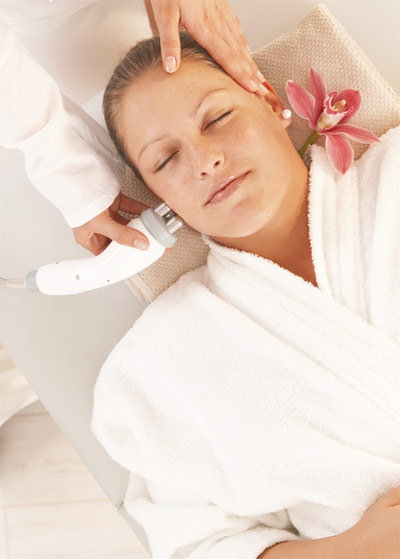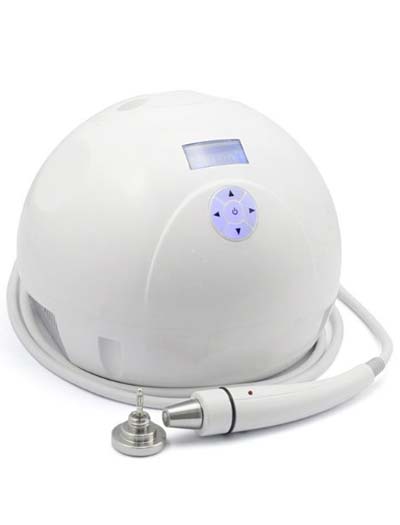|
|
|
 , ,
Font size |
Top 10 Beauty Treatments done by Celebrities Before the Oscars.

 Radio frequency Head-to-Toe Instant Tightening:
Radio frequency Head-to-Toe Instant Tightening:
Even in Tinseltown, scalpels are becoming yesterday's news. Surgery
isn't all it's cracked up to be, says Ava Shamban, an assistant clinical
professor of dermatology at UCLA.
When her star clients need a lift, she performs Power Facials: an
exfoliating retinoid peel, Intense Pulsed Light (which targets brown spots
and broken capillaries), microdermabrasion with an infusion of the
antioxidants vitamin C and niacinamide, and, finally, radio frequency to
firm the face and neck.
"Skin tightening is huge in Hollywood," she says. "I've done several
actresses' eyelids and brows right before red-carpet events because
instantly, the skin looks incredibly taut, and there's no downtime." Shamban
uses the Pellev� radio frequency device, which doesn't require anesthesia
(she likens the sensation to a hot-stone massage). Results are most visible
in the 48 hours after treatment. For an effect that lasts about a year, four
to five monthly treatments are needed.
A 'non-surgical team' of registered nurses will tighten every inch with a
radio frequency device. Nurse Jamie says: 'Instantly the skin looks
incredibly taut and there is no downtime.
The field of body contouring and tissue tightening has grown very rapidly
over the past several years, with many new devices appearing on the market
that utilize radiofrequency (RF) energy to effectively tighten and
rejuvenate the skin. What originally began with a single monopolar RF device
has progressed into a world in which there are skin-tightening devices that
utilize, besides monopolar RF energy, bipolar energy and tripolar energy,
and newer machines that boast five and eight poles of RF energy. Each of
these devices claims to have positive effects on the skin, which can lead to
tissue tightening and ultimate rejuvenation of the skin.
The field of body contouring and tissue tightening has expanded over the
past several years, with many new devices appearing on the market that
utilize radiofrequency (RF) energy to effectively tighten and rejuvenate the
skin. In their review of the use of nonablative RF in the rejuvenation of
the skin, Elsaie et al. thoroughly outline the physics behind
photomodulation utilizing laser energies versus rejuvenation using RF
energies. Through the laser light delivered to the skin, there is an
associated upregulation of matrix metalloproteinases that leads to a
cellular response in the dermal collagen of the skin. This occurs either via
water and collagen absorption of the light energy leading to a thermal
effect on the dermis, or through the production of growth factors and
cellular mediators as a result of the light energy interacting with the
hemoglobin and melanin within the skin.
It has been postulated that nonablative lasers cause an increase in the
production of type I procollagen mRNA associated with the tissue response
occurring within the dermal matrix.
Radiofrequency energy, on the other hand, uses the tissue's resistance
within the various layers of the skin to transform the RF energy given to
the skin into thermal energy. Many considerations are required for there to
be successful transfer of the RF energy into thermal energy, including the
size and depth of the tissue being treated, as one needs to consider the
tissue impedance of the skin being treated. Since RF energy produces an
electrical current instead of a light source, tissue damage can be
minimized, and epidermal melanin is not damaged either. With this knowledge,
RF energies can be used for patients of all skin types � that is, it is
color blind and allows for different depths of penetration based on what is
to be treated, allowing for ultimate collagen contraction and production of
new collagen.
 In their article, Elsaie et al. summarize the various RF medical devices
currently being utilized in dermatology for skin tightening and body
contouring. The first and still widely used device is known as the
ThermaCool�, originally developed by Thermage�. Solta Medical (CA, USA), who
has expanded upon the original technology and now produces what is currently
known as the ThermaCool NXT, now owns Thermage. It uses monopolar RF energy,
in that energy runs from the treatment tip through the skin to a grounding
pad on a distant part of the skin. In the original clinical trial with the
Thermage, Fitzpatrick et al. evaluated 86 patients who received a single
treatment with the device on the forehead and temple regions. They found an
83.2% improvement of at least one point in the Fitzpatrick wrinkle score.
They also found, on average, an eyebrow lift of 0.5 mm in 61.5% of the
patients at the end of their study period. The patient satisfaction rate was
50% and adverse events, including erythema (36%) and edema (14%), were found
to occur and to resolve within a reasonable time period. Burns were noted in
0.4% of the patients. A US FDA approval for noninvasive treatment of the
periorbital rhytids came in 2002, and for the full face in 2004. In their article, Elsaie et al. summarize the various RF medical devices
currently being utilized in dermatology for skin tightening and body
contouring. The first and still widely used device is known as the
ThermaCool�, originally developed by Thermage�. Solta Medical (CA, USA), who
has expanded upon the original technology and now produces what is currently
known as the ThermaCool NXT, now owns Thermage. It uses monopolar RF energy,
in that energy runs from the treatment tip through the skin to a grounding
pad on a distant part of the skin. In the original clinical trial with the
Thermage, Fitzpatrick et al. evaluated 86 patients who received a single
treatment with the device on the forehead and temple regions. They found an
83.2% improvement of at least one point in the Fitzpatrick wrinkle score.
They also found, on average, an eyebrow lift of 0.5 mm in 61.5% of the
patients at the end of their study period. The patient satisfaction rate was
50% and adverse events, including erythema (36%) and edema (14%), were found
to occur and to resolve within a reasonable time period. Burns were noted in
0.4% of the patients. A US FDA approval for noninvasive treatment of the
periorbital rhytids came in 2002, and for the full face in 2004.
Further studies confirmed the results obtained in the original FDA clinical
trial. Over time, more burns from the original clinical protocol that used
high RF energies were found to be
occurring. In an attempt to control any untoward events, new protocols soon
found their way into the Thermage world, and increasing numbers of patients
were seeing the
expected results of skin rejuvenation. Newer treatment tips and continued
refinements of the protocols used lead to a study by Dover et al., who
evaluated over 5700 Thermage patients. In this study, they found that in
those patients who were treated with the original Thermage protocol, 26% had
immediate tissue tightening, 54% showed tissue tightening at 6 months, 45%
found the procedure to be too painful and 68% felt the procedure met their
expectations. With the new Thermage multiple-pass, lower-energy protocols,
87% noted immediate tissue tightening, 92% had tissue tightening at 6
months, 5% felt the procedure was too painful and 94% of the patients felt
the procedure met their expectations. There is now a new Comfort Pulse
Technology� (CPT) handpiece that uses vibration to make the procedure even
more comforting.
With Thermage, one finds that when the procedure works, it continues to work
well over time, which was also borne out in the study-survey performed by
Dover et al. Thermage is the prototype device that all other devices are
compared with and compare themselves to. It is still going strong, and has a
large and loyal following.
Next..
Dated 27 February 2013

|
|
|
|
|
|









